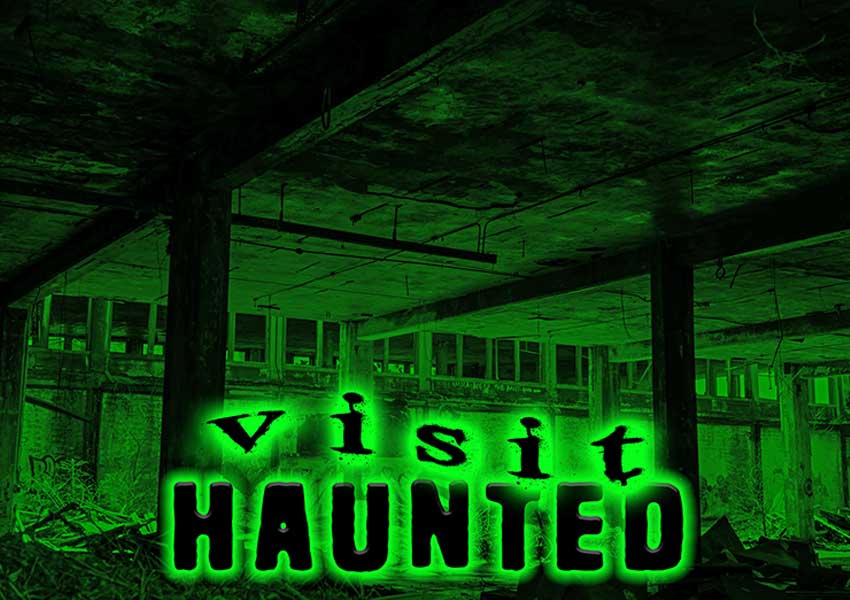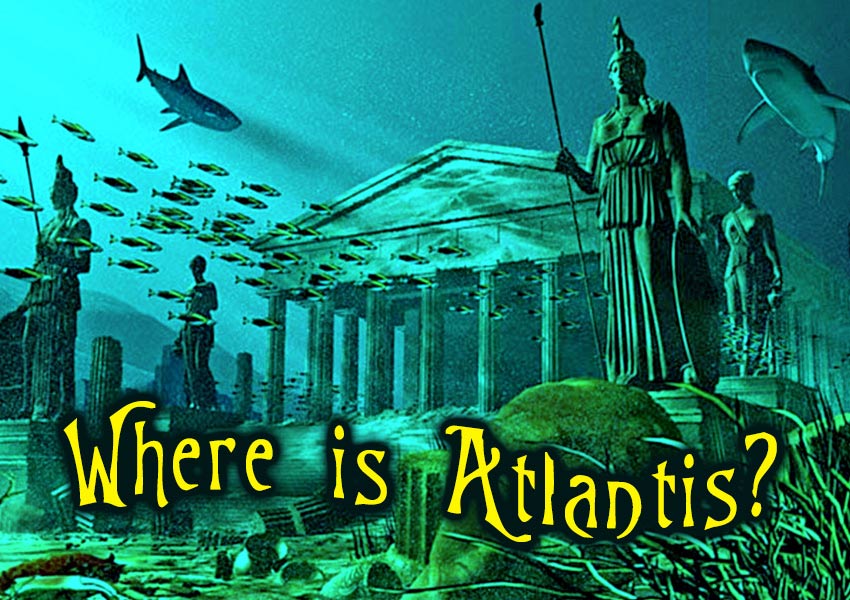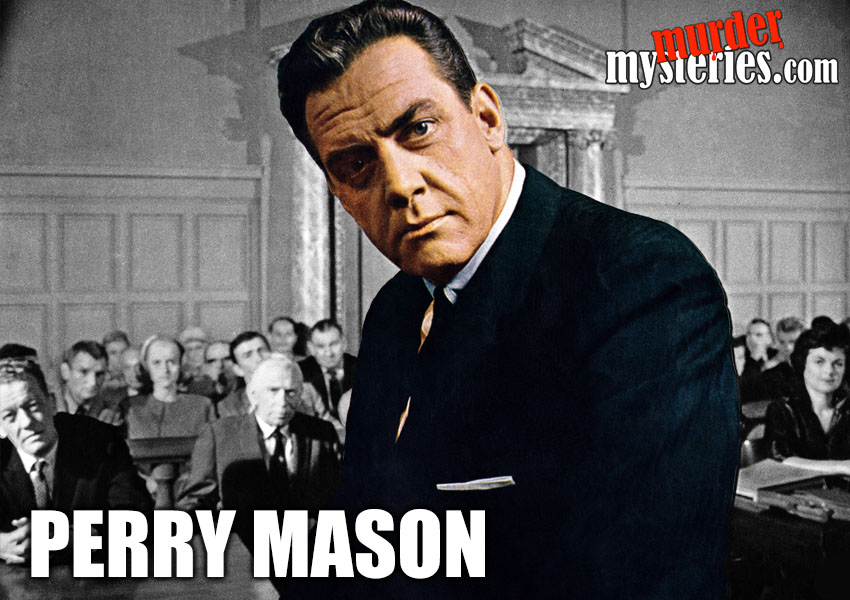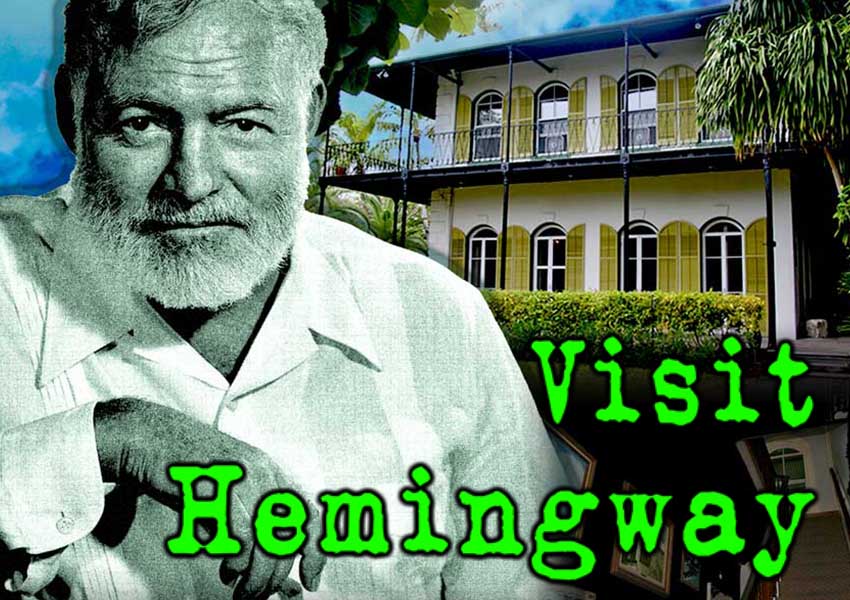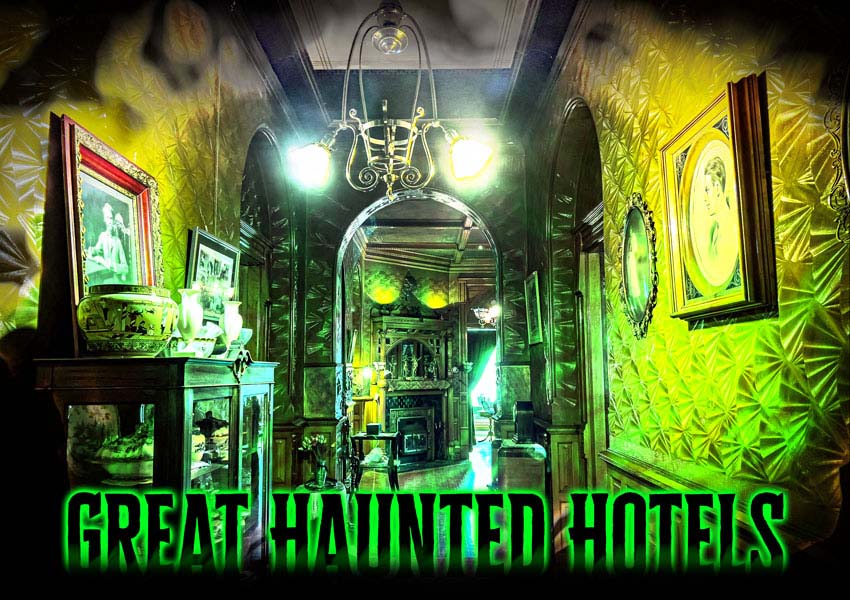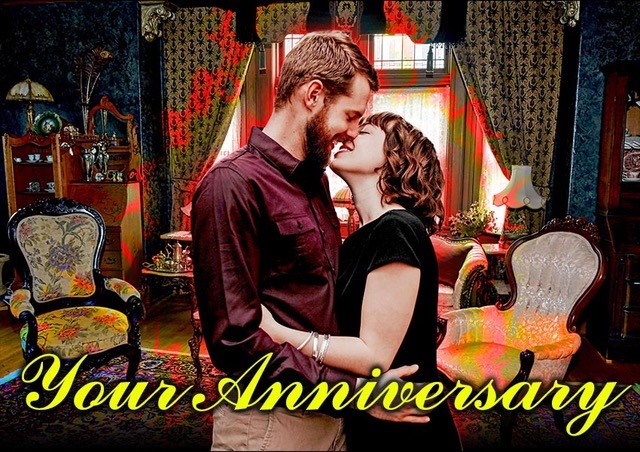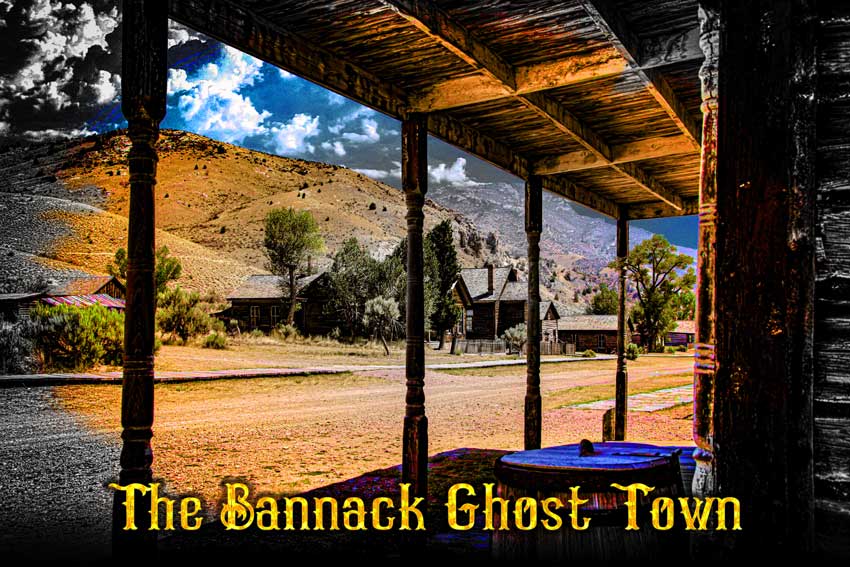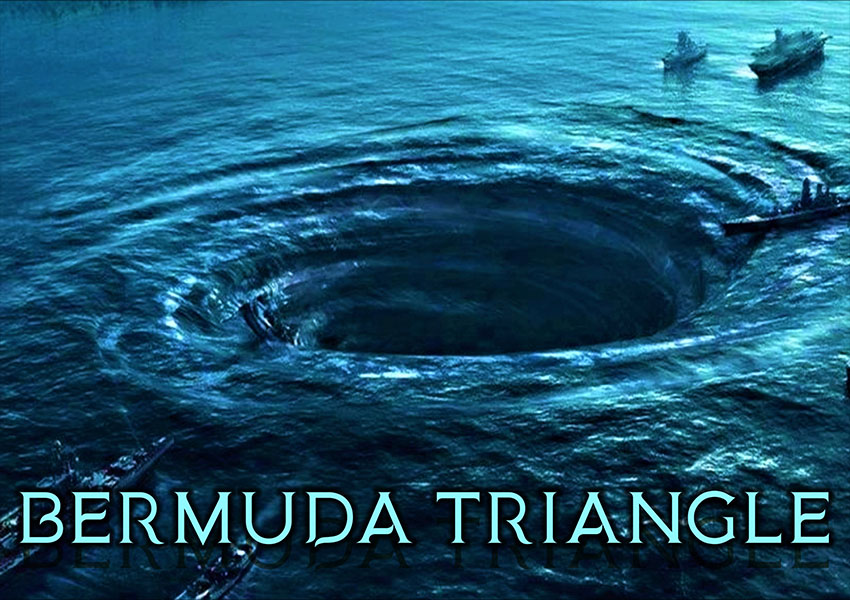Alameda California
USS Hornet – Sea, Air, and Space Museum
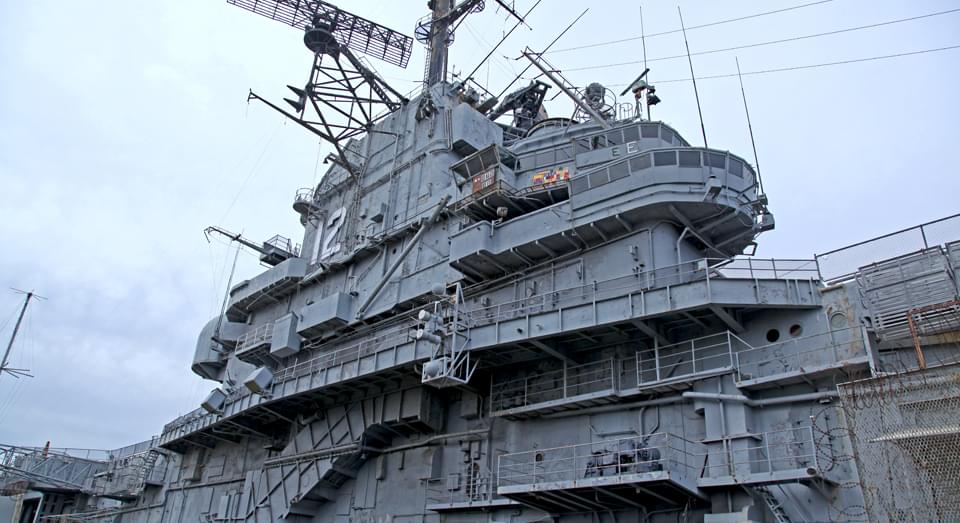
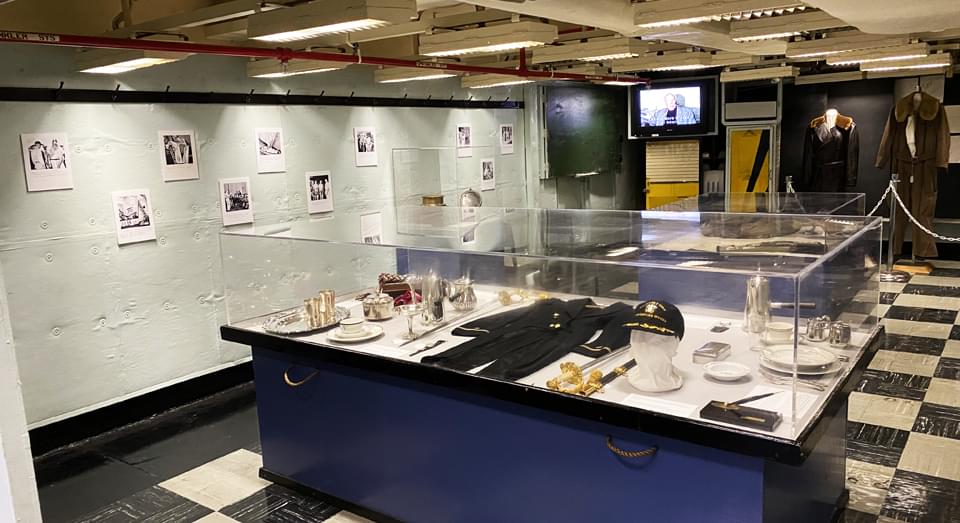
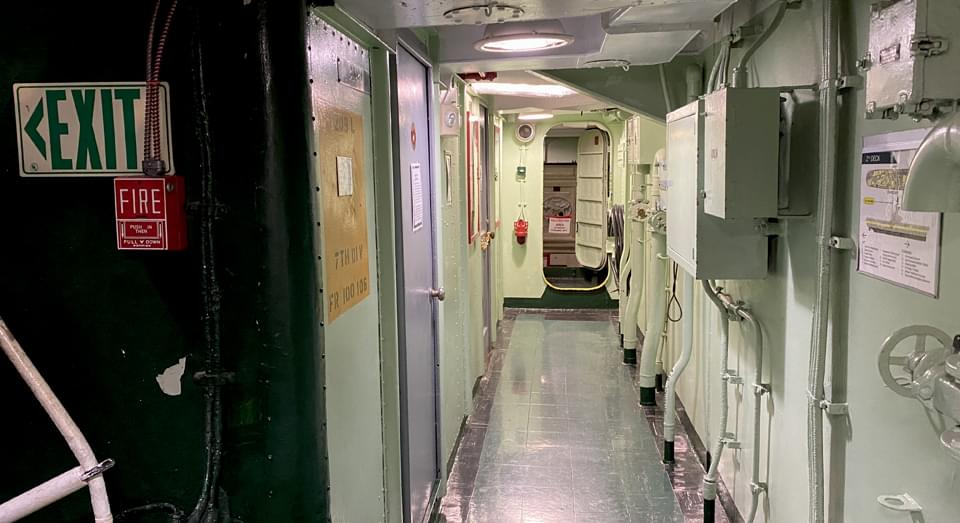

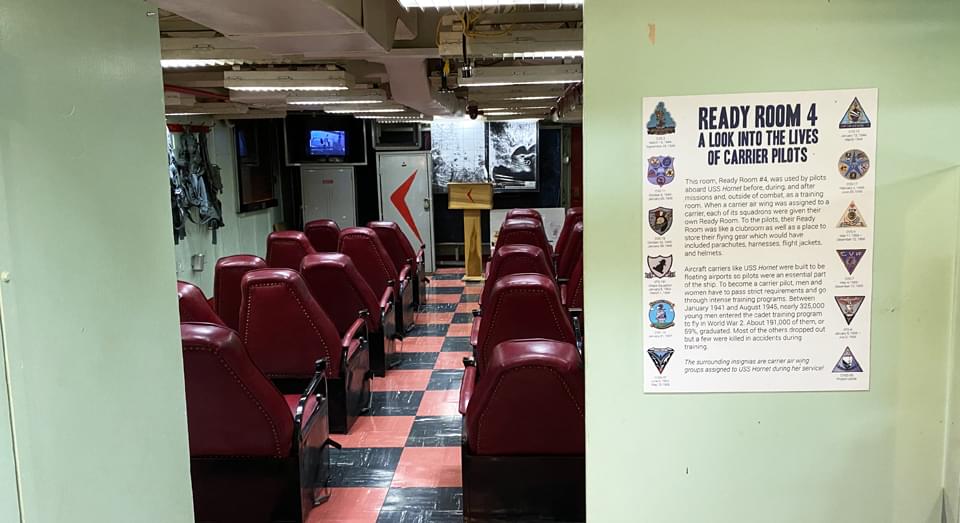
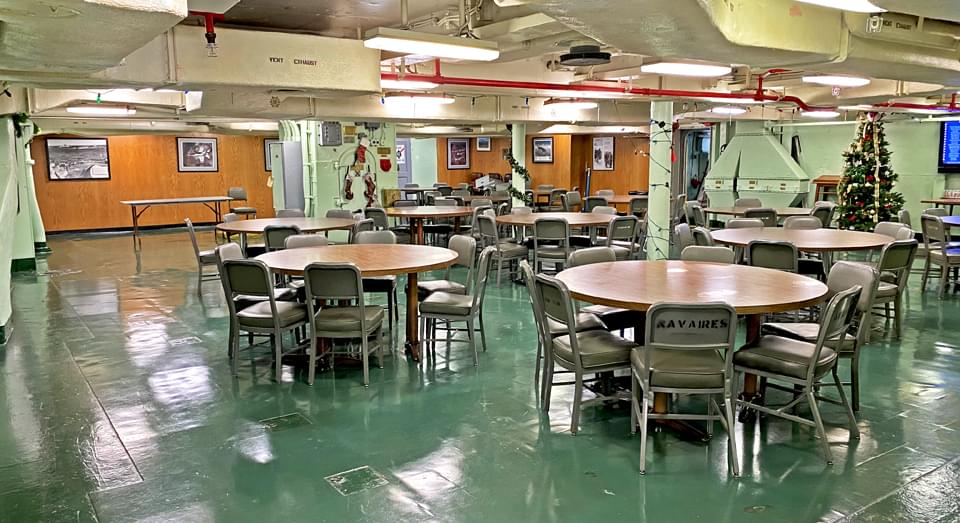
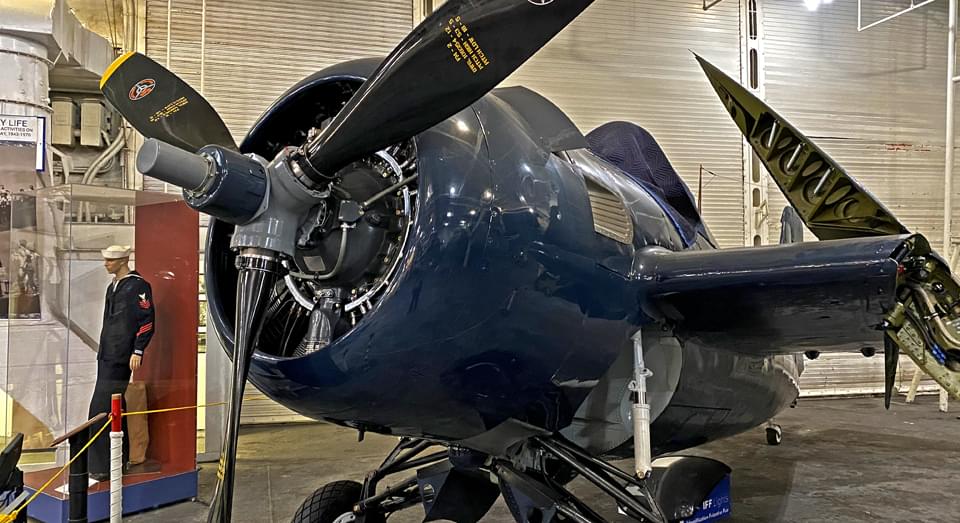
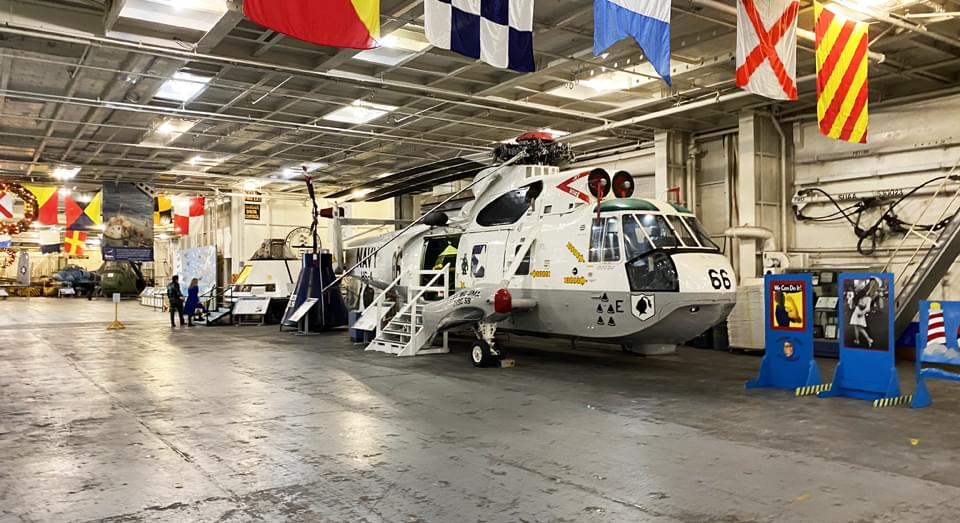
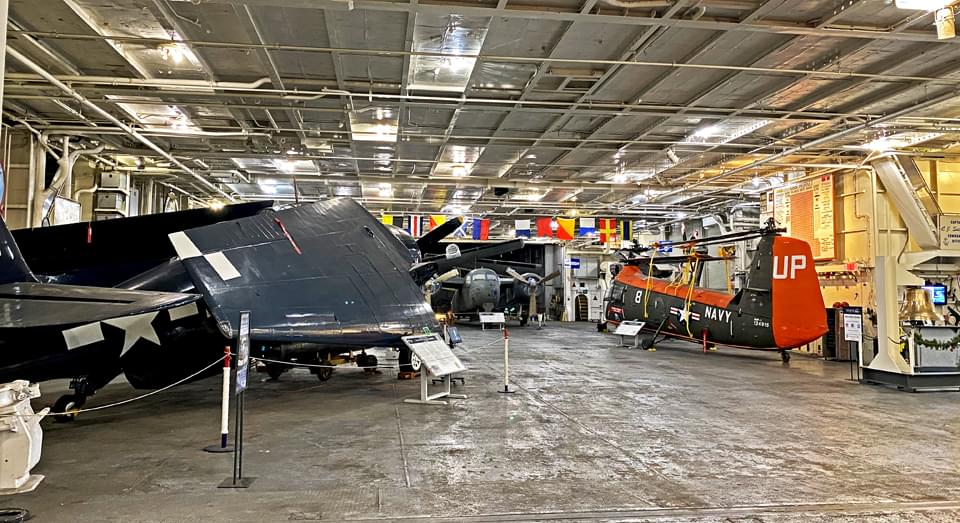
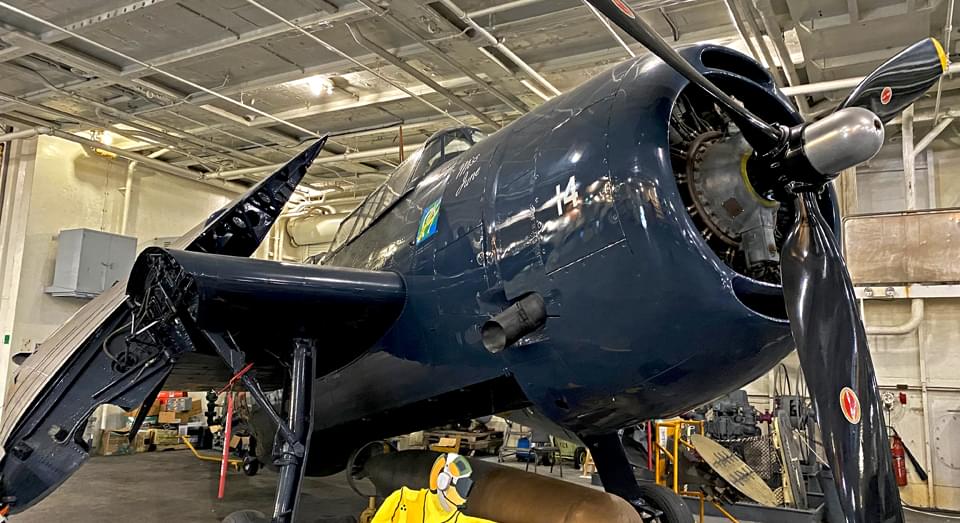
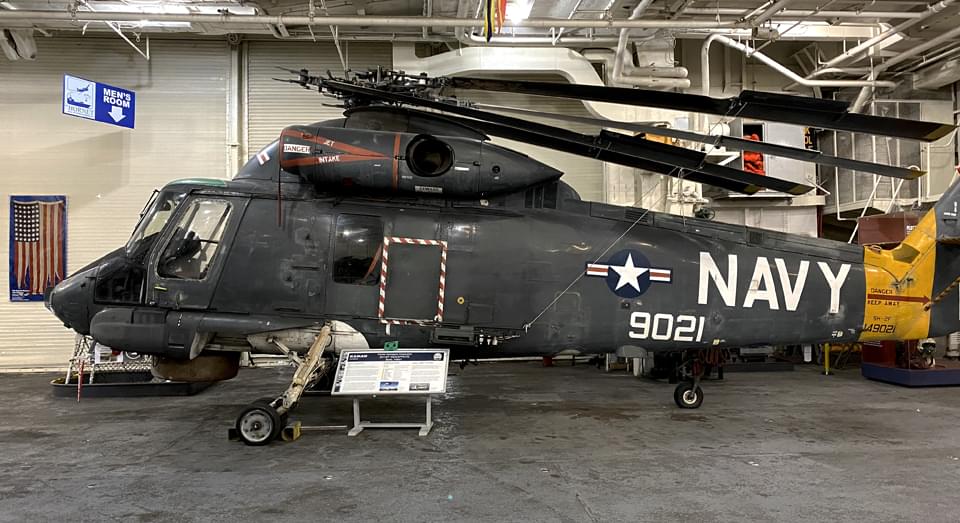

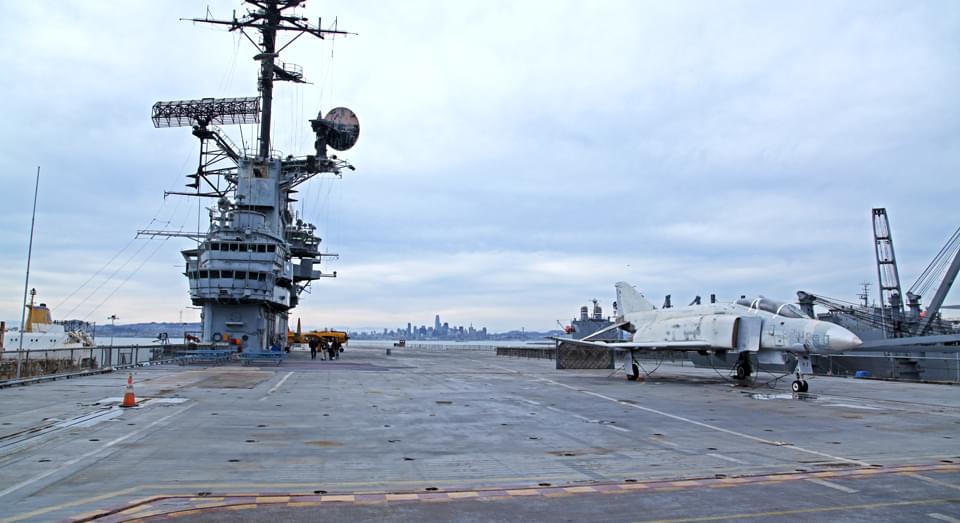
Shame and disappointment keeps a sour spirit in the brig.
“Lights Out” for the overnight guests is obeyed. There are spectral enforcers.
Spirits go about their duties; helping the living, even without a head.
The ER is still a sacred, serious space: disrespect = spectral discipline!
DESCRIPTION
”The heart of a carrier’s combat strength is its aircraft; her Air Groups provided Hornet’s lethal sting. Hornet’s success was dependent on the capabilities of highly trained pilots and aircrews and the specialized aircraft that operated from her flight deck. (Hornet hand-out).
The USS Hornet CV-12, CVA-12, CVS-12 is one of the “24 legendary Essex-class aircraft carriers built during WW 2” and in the following years. She is one of the most decorated combat aircraft carriers of the U.S. Navy.
Tom and I visited this proud aircraft carrier at the Alameda docks in Calif. After we walked up the plank, and entered the main inner deck, called the Hangar Deck, we were transported back to an era when The USS Hornet was a gutsy aircraft carrier determined to face foes and serve wherever she was needed.
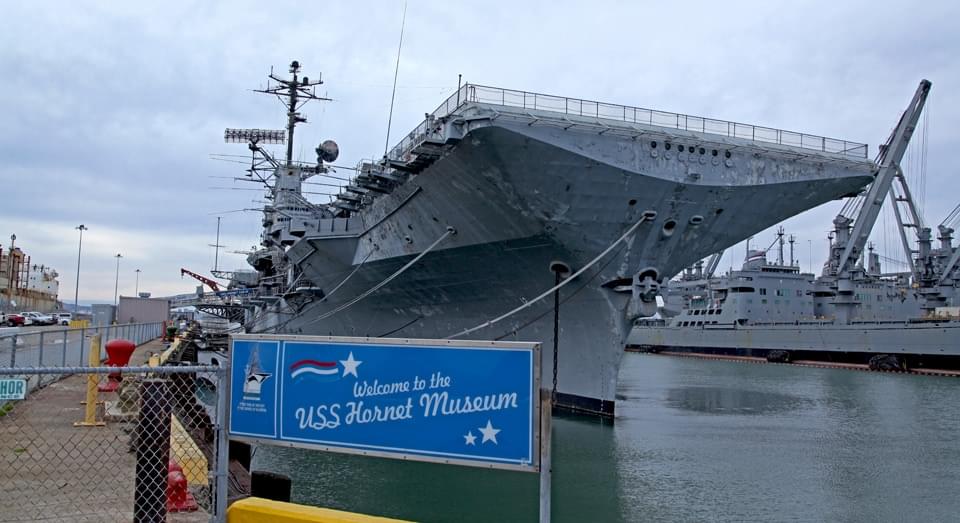 This USS Aircraft Carrier is 894 ft. It’s greatest width is 191 ft, 11 inches. To the top of the mast, The Hornet is 193 Ft. 6 inches. It’s displacement of water is 41,200 tons.
This USS Aircraft Carrier is 894 ft. It’s greatest width is 191 ft, 11 inches. To the top of the mast, The Hornet is 193 Ft. 6 inches. It’s displacement of water is 41,200 tons.
While the Hangar Deck doesn’t have many planes on display, like its sister carriers: USS Livingston, etc, there are interesting exhibits from the NASA Apollo Moon exploration missions, and several retired aircraft from the Second World War and the transonic and early supersonic jet propulsion period. For extra chuckles, try flying in the flight simulator which needs another ticket to participate. Fifteen visitors can go on one simulated flight.
The floor down one level from the Hangar Deck; the Second Deck, has completely been restored as the place where all Navy personnel and their unit of Marines lived and prepared for duties before them.
In 2020, this floor is the heart of their Educational, Scientific programs for the public and organizations which brings in funds to help maintain and restore this historic vessel. These programs teach history and science in fun interactive manner. Both Daytime Programs and Overnight programs are popular indeed.
Overnight programs – Groups can spend the night on board in the bunk sections, and have dinner there as well through history-based Live-Aboard and STEM Night Ops. Girl Scouts, Boy Scouts, Cadets, and other groups have stayed aboard the USS Hornet; helping to bring in money needed.
There is The Bluejacket Training Family Activity Room where families can relax, enjoy hands-on activities and learn how to be a sailor.
Like a small city, it had the necessities needed to live aboard ship: Dining areas, bunk rooms, Sick Bay, Post Office, War Room, Bathrooms, Armaments, Movie Room, Library, General Store, Bakery Shop, Cobbler Shop, Barber Shop, Tailor Shop, Captain’s Quarters, and Admiral Quarters.
The upper flight deck was home for the Observation Deck, Brig, and a place for all the aircraft fighters/bombers needed for any battle plan. There are also Air craft elevators that can go down to the Hangar and bring up planes that were needed, or bring planes down to the Hangar Deck as well.
The USS Hornet enjoys the help of 150 volunteers; many past servicemen and sailors. There are audio and docent tours, led by volunteers, of The USS Hornet that last about 3 hours for a total tour of everything. If you only have an hour or so, do a self-tour of the Second Deck that was completely restored to the way it was when The USS Hornet first launched on August of 1943.

HISTORY
The USS Hornet’s Keel was laid on August 3rd, 1942, in Newport News, Virginia. It took only 16 months to finish building her; many of the workers were women. She was christened The USS Hornet; the eighth ship to be so named. The USS Hornet originally was to be named The USS Kearsarge, but when The 7th USS Hornet was sunk in the battle of Santa Cruz on October 27th, 1942, the new aircraft carrier’s name became The USS Hornet.
The USS Hornet set sail to “hunt bear” in the South Pacific, after being commissioned as CV on November 29th, 1943. She had on board a crew complement of 3,400 with Air Wing. Her air groups consisted of a fighter (VF) squadron, a bombing (VB) squadron and a torpedo (VT) squadron. There were 100 fighter planes for the squadrons on board. She joined Task Force 58.
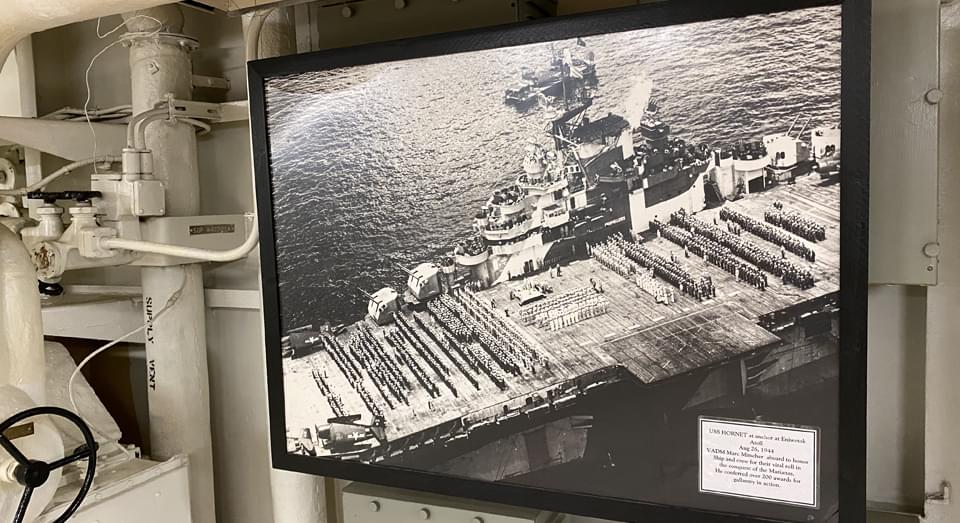 The USS Hornet had a long tour of duty in the South Pacific, never docking in a port for fifteen months. This cemented very strong bonds among the men. It was also a bit rough for those who reacted to the intensity of so much stress of battle and loss in not so good way resulting in Battle Fatigue Syndrome in an era where the cure was to suck it up and go forward. It sometimes resulted in self-destruction.
The USS Hornet had a long tour of duty in the South Pacific, never docking in a port for fifteen months. This cemented very strong bonds among the men. It was also a bit rough for those who reacted to the intensity of so much stress of battle and loss in not so good way resulting in Battle Fatigue Syndrome in an era where the cure was to suck it up and go forward. It sometimes resulted in self-destruction.
The USS Hornet was in the belly fire of war, being attacked fifty-nine times; but was never hit by a torpedo, a dropped bomb or a kamikaze airplane, though some pilots lost their lives. Needless to say, all the squadrons were in plenty of action, with a stellar record of shooting the enemy out of the sky; a thousand enemy planes by the end of WW2.
In one battle over the Mariannas, the pilots from The USS Hornet shot down a record sixty-two enemy planes in one day. This confrontation was given the nickname: “The Mariannas Turkey Shoot.” In one month, they shot down 255 enemy planes.
Their great record of achievement of The USS Hornet also included: one carrier sunk, one cruiser sunk, ten destroyers sunk, forty-two cargo ships sunk, and assisted in the sinking of the IJN super battleship Yamato.
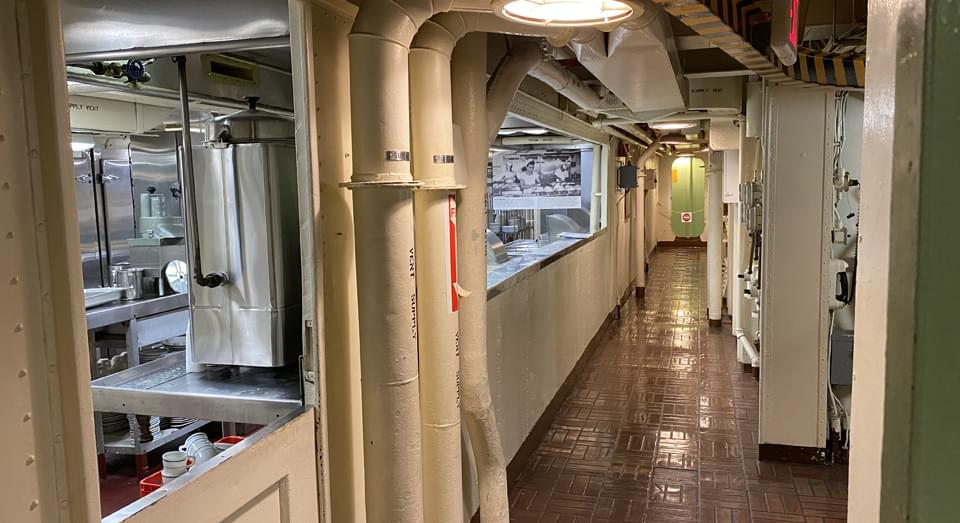 By the end of WW2, The USS Hornet had earned nine battle stars for the nine major skirmishes they helped to win. The Air Wing Groups earned a Presidential Citation for the nine big battles they participated in with such success.
By the end of WW2, The USS Hornet had earned nine battle stars for the nine major skirmishes they helped to win. The Air Wing Groups earned a Presidential Citation for the nine big battles they participated in with such success.
After the War, The USS Hornet was decommissioned for four and a half years before being recommissioned as a CVA: Attack Carrier. The vessel was upgraded, renovated, andmodernized; a process The USS Hornet went through several times to meet the goals of its commissions. The crew compliment was 3,500 with Air Wing. There were forty-four planes in service on board.
The USS Hornet participated in the Vietnam Nam War twice, was a training facility, and stepped in to help in times of calamity.
Toward the end of its commissioned years, it had the honor of picking up NASA’s astronauts, from Apollo 11 and Apollo 12: both in 1969. The USS Hornet was decommissioned on June 26th, 1970. It began its deactivation process in Long Beach, California.
In June of 1970, The USS Hornet was officially decommissioned in the dry dock at the Naval Yard in Puget Sound. It sat in “mothballs”; its future uncertain. In 1989, its name was stricken from Naval Records. The USS Hornet may have wound up in the scrap heap but for some dedicated folks who formed the Aircraft Carrier Hornet Foundation. The USS Hornet was donated to the Aircraft Carrier Hornet Foundation. They had The USS Hornet listed on the National Register of Historic Landmarks in 1991.
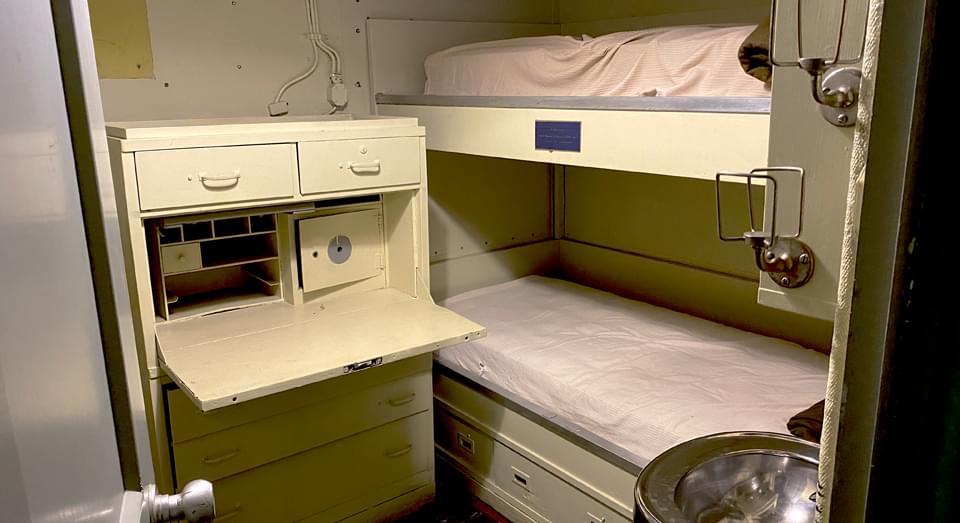 In 1998, The U.S Naval Yards in Alameda were closed, and the docks were given back to the city of Alameda. The City Council decided to rent out the space to tenants. Seeing their opportunity to acquire a berth for The USS Hornet, representatives from The USS Hornet Foundation did some fast talking in front of the Alameda City Council. The council agreed. A few months later, The USS Hornet Museum opened for the public.
In 1998, The U.S Naval Yards in Alameda were closed, and the docks were given back to the city of Alameda. The City Council decided to rent out the space to tenants. Seeing their opportunity to acquire a berth for The USS Hornet, representatives from The USS Hornet Foundation did some fast talking in front of the Alameda City Council. The council agreed. A few months later, The USS Hornet Museum opened for the public.
However, The Aircraft Carrier Hornet Foundation in the first ten years couldn’t pay the rent, so the City Council lowered the rent several times. The Aircraft Carrier Hornet Foundation were not getting the foot traffic they expected. They had to start from scratch, because this vessel needed a lot of TLC and it took time to make it an attractive destination to draw in visitors, who wanted to get their money’s worth. Other ways were eventually found to increase their revenue, and the patience of the Alameda City Council paid off for everyone.
Things looked up financially for the Foundation after a decade of struggling, and they were able to pay back the rent owed the city of Alameda in 2013. A battle won that pleased everyone! The battle to find ways to raise enough money to maintain, restore The USS Hornet and pay the city rent was a long one indeed, but they did it; even restoring the second deck.
Besides adding Astronaut displays to the main deck, this restoration opened opportunities to offer more activities that would attract the public to buy a ticket and participate. It added meat to their tours as there was now more to see and experience.
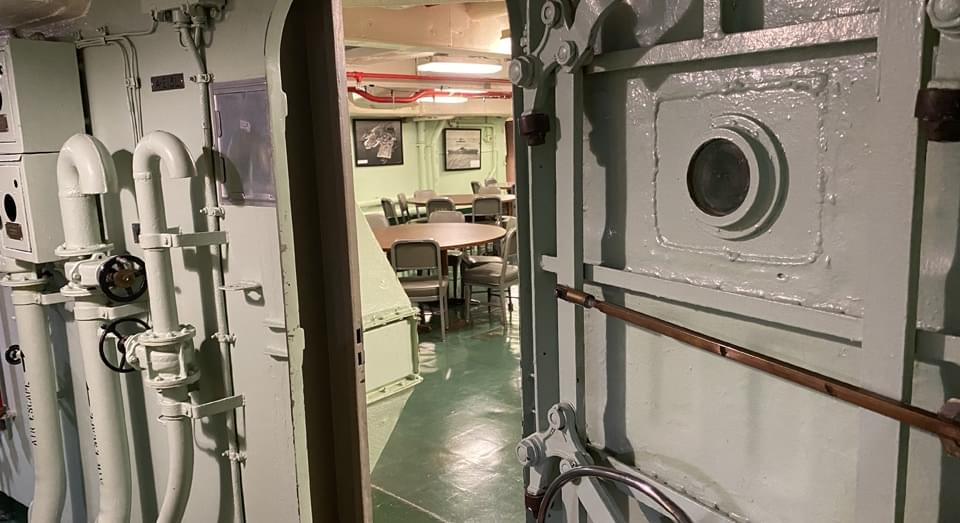 Daytime audio tours and docent tours as well have new interesting displays, exhibits and gives the visitor a feeling of what it was like living on board. There is even a family fun room, The Bluejacket Training Family Activity Room, where families can relax, enjoy hands-on activities and learn how to be a sailor.
Daytime audio tours and docent tours as well have new interesting displays, exhibits and gives the visitor a feeling of what it was like living on board. There is even a family fun room, The Bluejacket Training Family Activity Room, where families can relax, enjoy hands-on activities and learn how to be a sailor.
Other Daytime Programs include STEM-TO-STERN Workshops, and Passport to History, where students are assigned the identity of a sailor who served on aboard and explore the ship through his perspective.
Overnight programs – Groups can spend the night on board in the bunk sections, and have dinner there as well through history-based Live-Aboard and STEM Night Ops. Girl Scouts, Boy Scouts, Cadets, and other groups have stayed aboard the USS Hornet; helping to bring in money needed.
Apparently, because of the cooperation of spirits of men who served on the USS Hornet, there are paranormal tours; 7-10 pm. All the staff know well enough all the paranormal hot spots aboard this aircraft carrier.
Paranormal groups can also rent time on-board to try to contact the spirits who stay or visit here.
Fundraisers and Memberships to The USS Hornet Support organization also bring in funds.
HISTORY OF MANIFESTATIONS
In the USS Hornet’s “27 years of active service, more than 300 people lost their lives aboard ship. The majority claimed during combat, others from these horrendous shipboard accidents, still others from suicide.”
The spirits who reside or visit on this U.S. air carrier have become part of this new USS HORNET non-profit organization and like to try to help the living while enjoying their memories, enjoying being with spirit buddies and working through their pain and restlessness as well.
U.S Aircraft carriers, Battleships and Destroyers can be dangerous places to be stationed. Accidents aboard have taken lives.
USS Lexington, TX (A Chief Petty Officer on board The USS Lexington C16 backed up inadvertently into a propeller).
USS Iowa Battleship, CA (In 1987, forty-seven men were violently incinerated when a routine gun drill in Turret 2 went horribly wrong, exploding back into the turret).
USS Turner Joy, WA (During the Viet Nam War, while providing support, a gun barrel overheated, causing a 70-lb shell to jam and explode, blowing back and killing three sailors and injuring three others).
USS Hornet, CA (Some horrendous accidents happened on board).
“Sailors have walked into aircraft’s spinning props, been sucked into their air intakes, and blown off deck by their exhaust. Dropped ordnance has exploded, burning and maiming sailors. Snapping flight arrest cables are known to have decapitated at least three men on the USS Hornet.” (Haunted bay.com)
Military personnel who die suddenly in the heat of battle, can leave their bodies very quickly, resulting in spirits not ready to pass over into the spirit world just yet and stay on this assigned job.
USS Lexington, TX (Fifty USS Lexington seamen burned to death, if they weren’t immediately incinerated inside the ship when the plane crashed into the back of the bridge and engine room).
Farnsworth House, PA (Spirits of Confederate soldiers who were killed while guarding the house, are still continuing to do so).
USS Hornet, CA (Sailors and pilots were suddenly killed in battle).
When a structure or military property is restored, spirits who have attached themselves to their favorite place that they loved while alive, are drawn back, finding ways to fit into their old life the best they can as a spirit.
Pioneer Living History Museum, AZ (Spirits attached to the buildings moved here are enjoying their restored homes and places of work; reliving their life by doing what they enjoyed. They have no fear of the living and interact freely with paranormal investigators).
USS Iowa, CA (Sailors step up to the plate when the living need help).
Eldridge Hotel, KS (Col. Eldridge, the man while alive was responsible in rebuilding this hotel in times of great calamity. He stays around with a fatherly eye on the staff, trying to help out when he can).
USS Hornet, CA (Many spirits who served aboard The USS Hornet, still love this place and feel very comfortable to jump right in and be helpful; giving themselves new assignments).
Experiences on board or in battle that caused deep, unpleasant emotions felt during a fatal occurrence, or still felt even after a lifetime sometimes tie the spirit to a place in this world, where it happened.
Little Bighorn Battlefield, MT (Men of Custer’s Calvary suffered terror and awful pain of being scalped alive before they died).
USS The Sullivans, NY (During WW 2, the five Sullivan brothers served on the same ship, sticking together, like “The Three Musketeers.” When their ship was sunk,George tried to save his brothers but was unsuccessful. He and the men in the life boat were left behind to die; too Risky. So, he dove off the boat, and swam toward an unseen shore, never to be seen again).
USS Constellation, MD (A crewman shirked his duty during a battle. Condemned to die, he was first stabbed by a sword and blown to bits by being put in front of a canon).
The USS Hornet, CA (A Kamikazi Japanese Pilot took an oath to die bravely by crashing into The USS Hornet. He failed in his mission; mistakingly landing in the drink beside this aircraft carrier. He was taken prisoner, winding up in the brig; forever shamed by his mistake).
(Sailors saw their buddies die).
(Sick Bay and the Surgery unit had its victories and losses too).
Bonding and comradery among a group of people can cause them to stay together as spirits in this world.
Brumder Mansion, WI (Spirits who were in Sam Pick’s speakeasy crew still enjoy being together).
United States Air Force Museum, OH (Spirits of flight crews still hang together around the plane
Gettysburg Battlefield, PA (Spirits of men who served and died together, still are a band of spectral brothers).
USS Hornet, CA (Being 15 months together in war conditions solidified bonds between men; not undone by death).
Suicide can cause hauntings.Soldiers who suffer from Battle fatigue Syndrome and survivors guilt are suicide-prone. Stress and loss caused men to kill themselves.
USS Hornet, CA (Because of being 15 months from a port during WW2, experiencing 57 attacks, and suffering the death of friends, The USS Hornet has the WW2 record for suicides of men who buckled under all the mayhem and death around them).
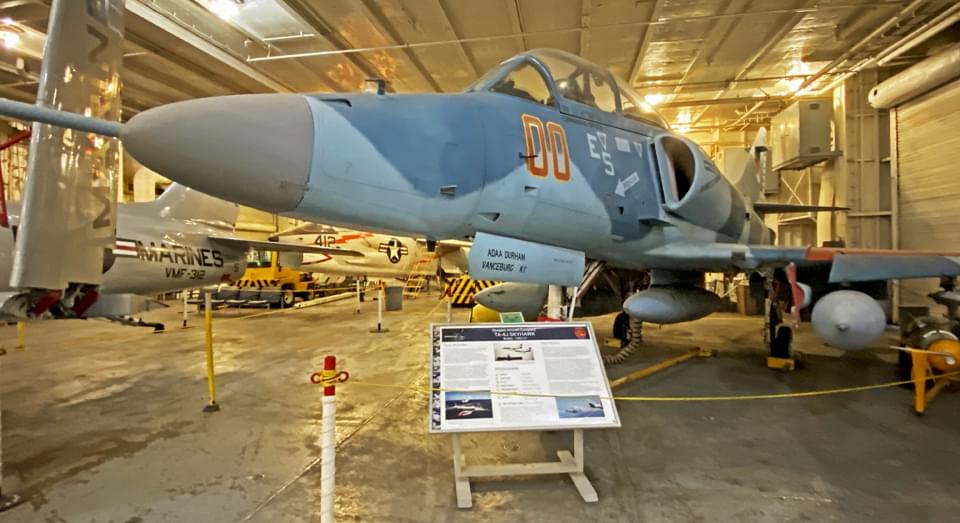
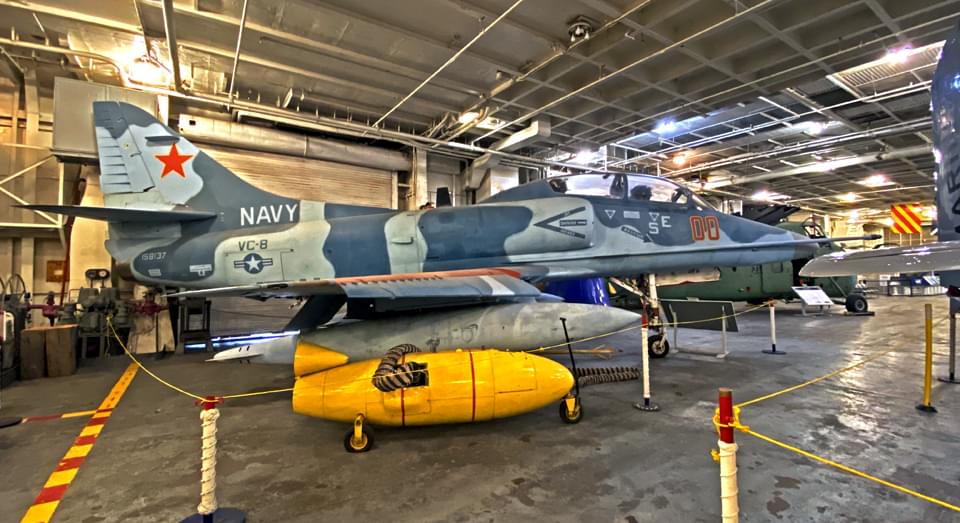
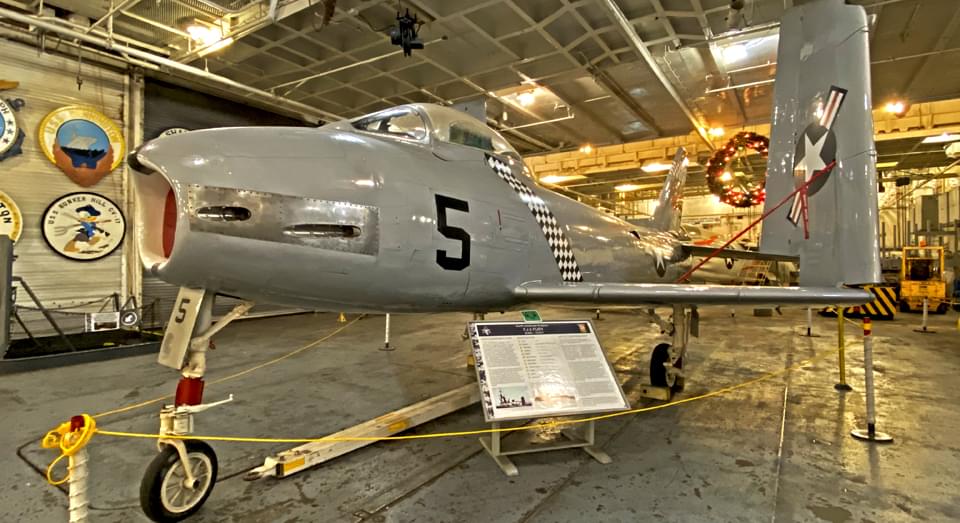
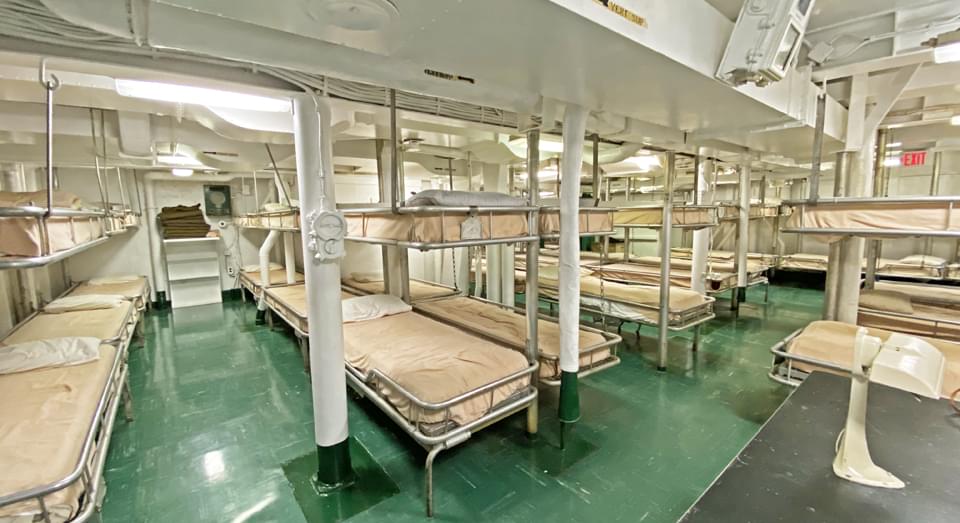
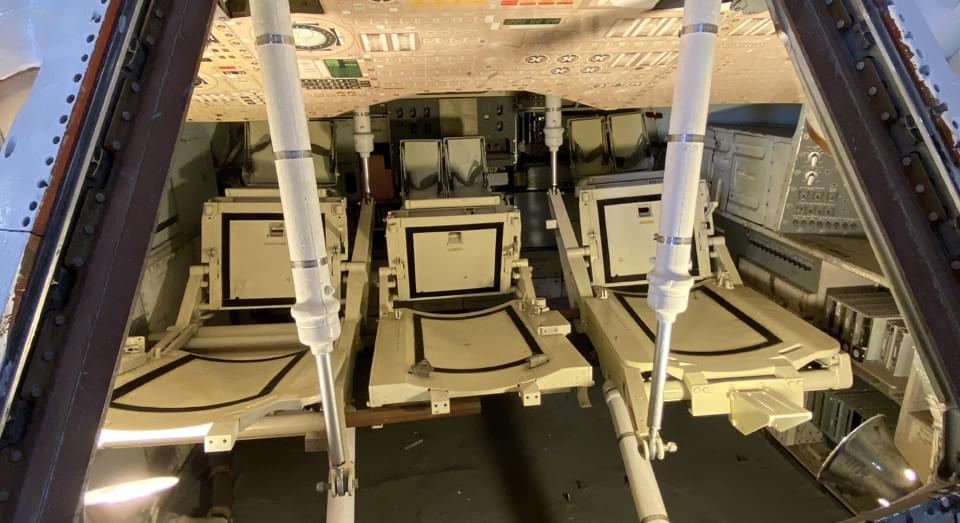
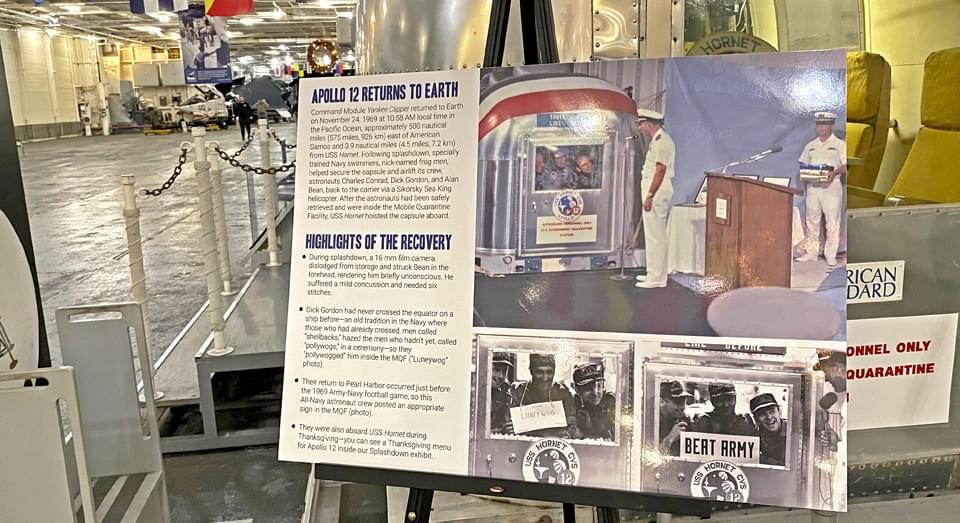
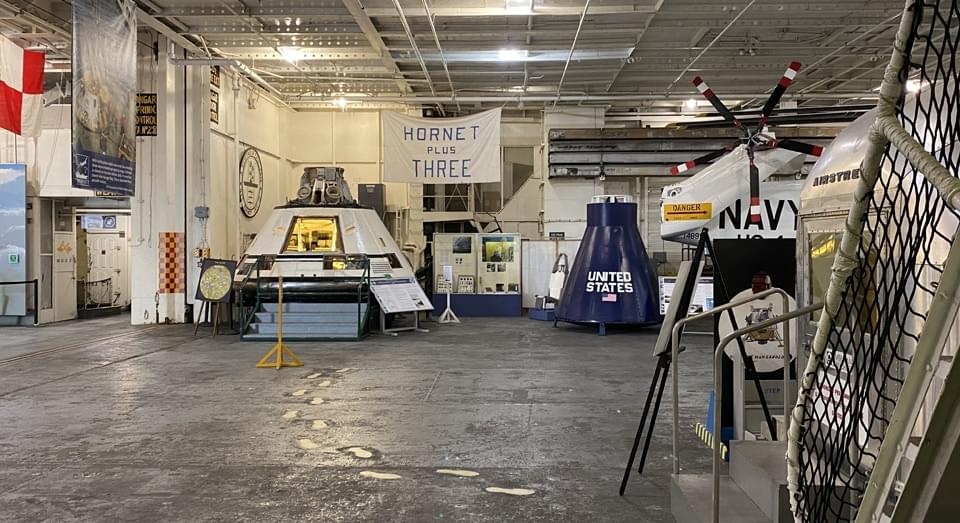
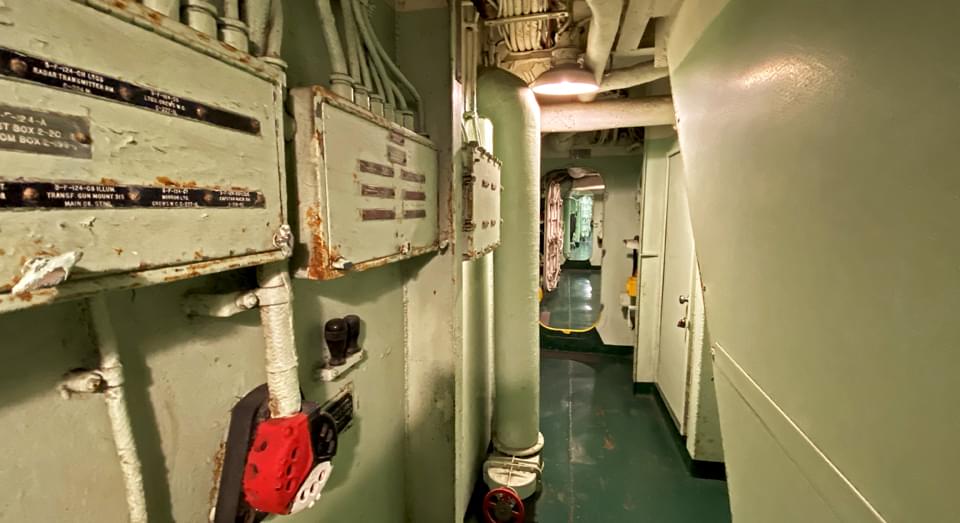


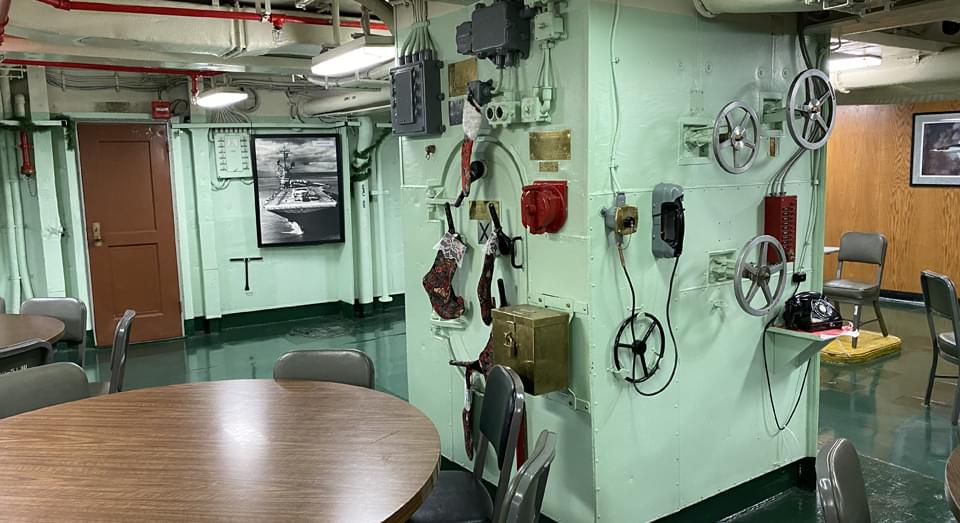
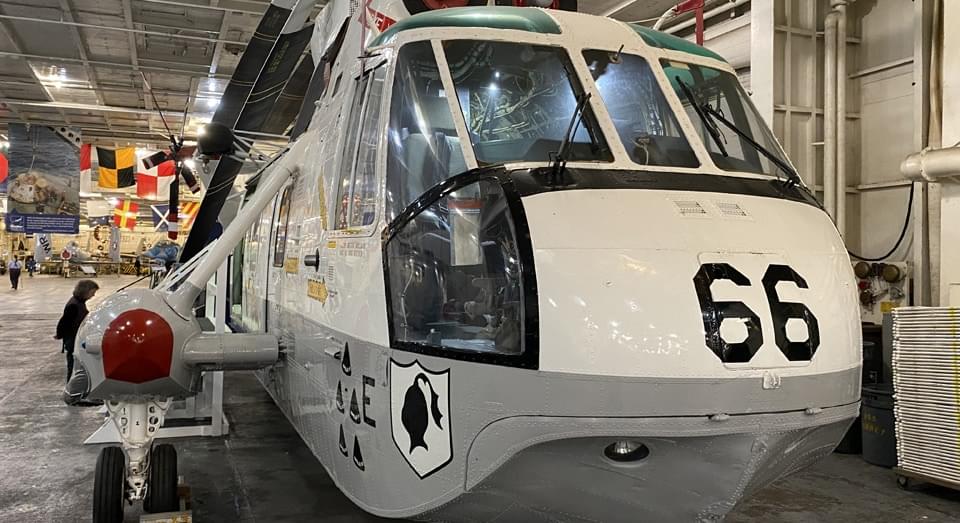
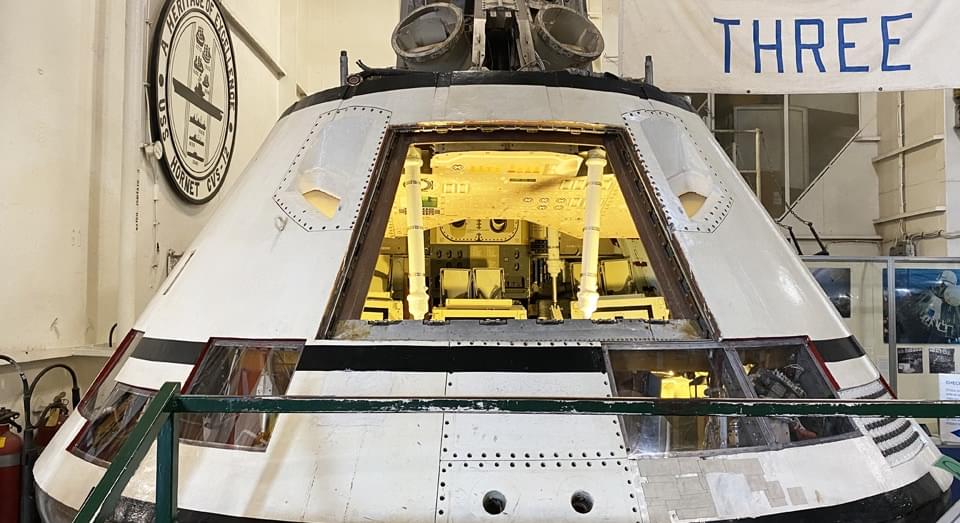
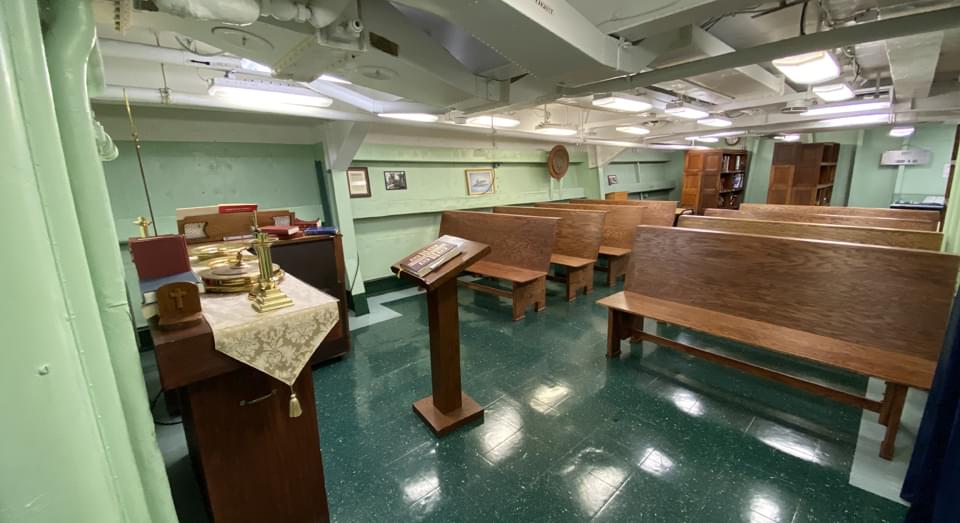
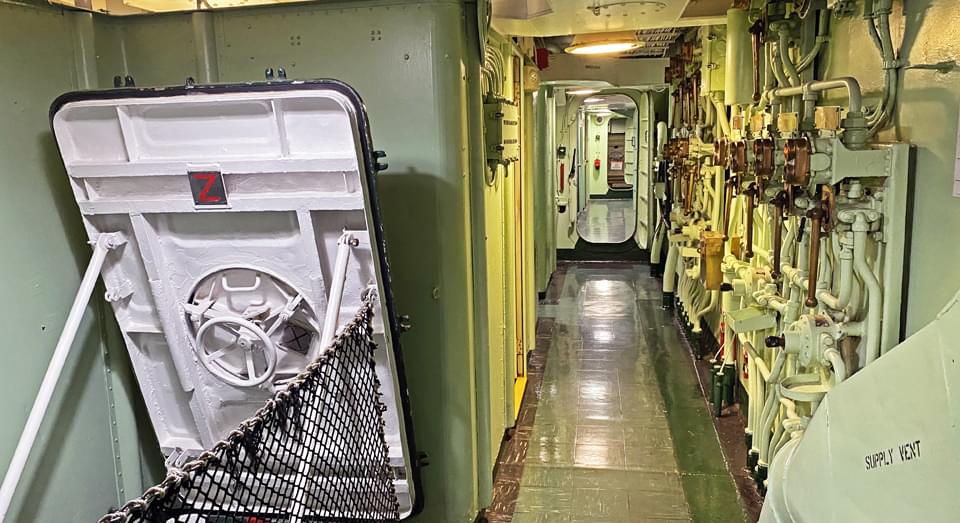
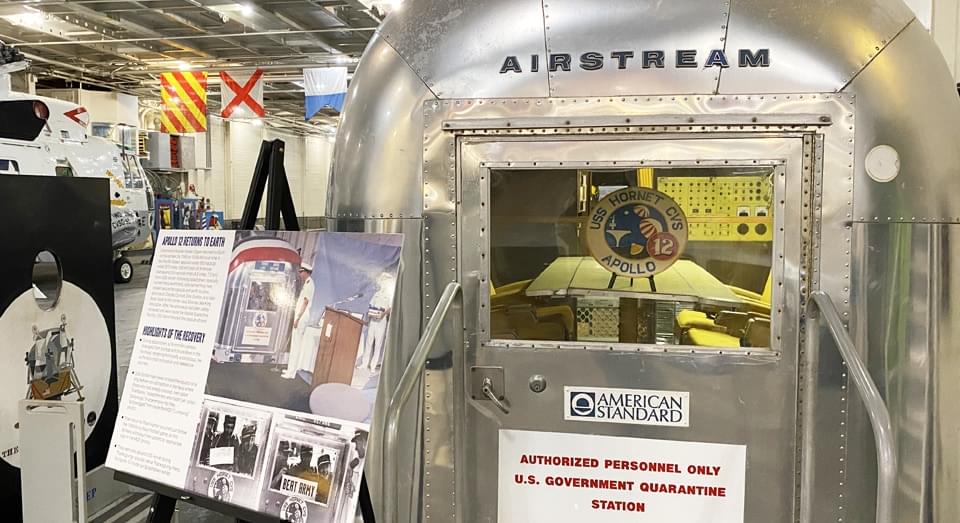

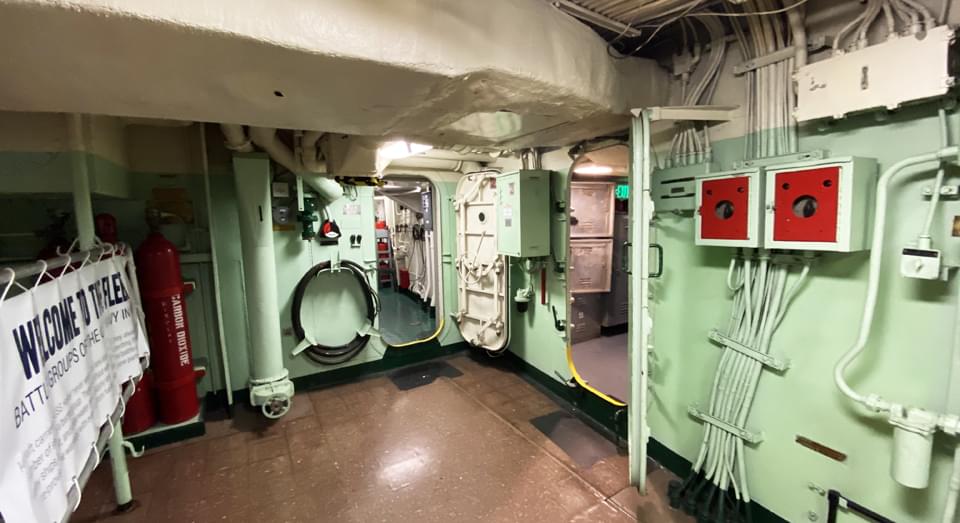
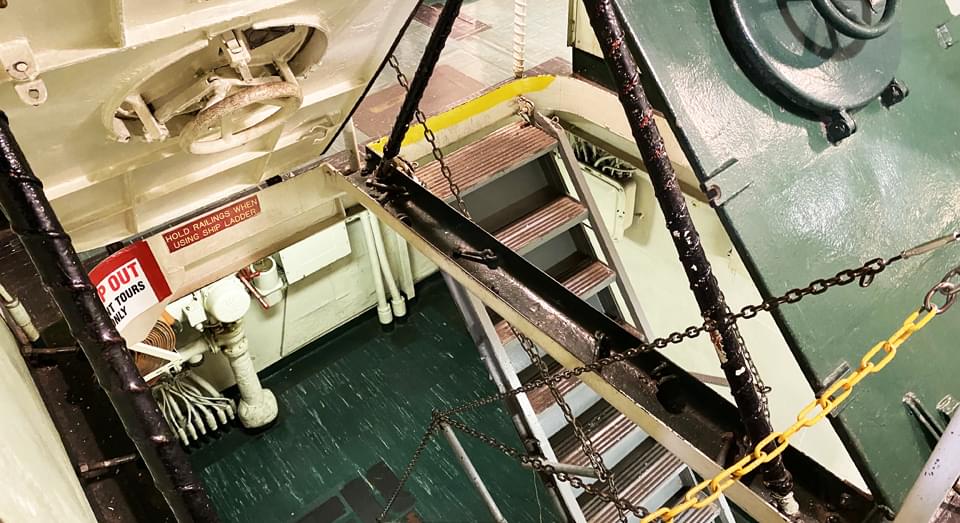

MANIFESTATIONS
Paranormal activity from spirits have been witnessed by many from WW2 onto the present time. Apparently, many spirits still want to be active on the USS aircraft carrier that they loved while working through their restlessness and pain; not ready to stay or move onto the spirit world.
On the Flight Deck
Spirits of officers and enlisted men haven’t let the fact that they are dead stop them from being members of the crew. See-through spectral Navy personnel have been seen by staff, docents and visitors, dressed in uniform going about their business.
Male spirits without heads
Male spirits without heads have been seen walking around the area, going about their duties- Who needs a head to obey orders? (Victims of a snapping arrest flight cable.)
Spirit of a Fly Boy
Isn’t one to feel sorry for himself.
He keeps himself busy; recently opening and slamming hatches and other chores.
Enjoys laughing and talking with others spirits.
Spirit of Captured Japanese Pilot
There is always one in every crowd who is a negative presence.
He is still in the brig that is located off the Flight Deck.
He is an unhappy spirit mad at himself, and has shown the living his feelings probably by throwing papers, moving stuff, giving off negative energy. No matter how he relives his disgrace, he can’t change it.
On the Second Deck
Is still the residing quarters for all spectral navy personnel who have volunteered to help with overnight guests.
Apparently, Lights out means lights out; no exceptions which means no reading lamps- enforced by spectral personnel. Girl Scouts found that out!
One Girl Scout Junior crew member was on the third tier up on the sleeping bunks. No one was under her. After “Lights Out” was called, she continued to read with her lamp.
When she turned it out, and got ready to go to sleep, she was pushed in the back from under her bunk. She looked over and saw in the corner of the room, a white light and two spectral sailors scrutinizing her. One said to the other; “Watch that one!”
Four Girl Scouts were in a room with bunks. As they got into their bunks, a spectral sailor wearing Kakhi uniform appeared as a see-through presence in the middle of the room.
One of them threw cards at him and the cards flew through him before he disappeared. When “Lights Out” was called to all, the girls turned on their reading lamps.
Five minutes later, an unseen presence went around and turned off all the reading lamps!
Struggles in Surgery Wing/Sick Bay
Spirits of old medical staff and a few patients still relive their upsetting struggles experienced here.
An apparition of a patient was spotted lying in a bunk in sick-bay.
A white mist was seen hovering around the X-ray machine.
Two spirits were seen in the surgery wing. One spirit was holding his wounded, dying friend’s head, who was a pilot.
ER Standards Still Apply
Like today’s ER in modern hospitals, the same standards are maintained – visitors not welcome.
On the self-guided tour, these rooms are roped off.
Respect and order is demanded in the Surgery Wing. Some visitors forget… Uh oh! Discipline is required.
Some scouts left their bags in the Surgery Room. When they came back to get their bags, contents of the bags were scattered around, and they felt a very cold breeze swirl around them.
Some Girl Scouts were bunked in Sick Bay where the sickest sailors were kept. When they came back from dinner, their belongings were thrown around the room.
1965-1969
The spectral spirit night shift; just waiting their chance to get back to their old jobs.
A sailor was having Iron Watch Duty in the Firebox Room where the boilers are located after the men who were scraping one of the boilers inside of its mammoth insides had gone off duty for the day.
In the middle of the night, this sailor became really hungry and ran to his locker to get a snack and was back quick as a flash.
Imagine his surprise when he heard a scraping noise coming from inside the boiler. He also heard muffled disembodied voices around him and actually saw an apparition walk behind the boiler.
Taking all the courage he had, this living sailor climbed up the big ladder, and peeked in to see who was doing night duty. No one living was there.
This once skeptic became a believer, and never left his station again.
1995 and 1996: Puget Sound Dock
In the front part of the Fight Deck; known as the Foc’sle, a spirit offered vocal support.
A sailor noticed that the Mooring line had been pushed through in the wrong direction.
This observant sailor proclaimed, “THAT AIN’T RIGHT!”
He heard a disembodied voice behind him agree with him, saying, “That isn’t right!”
The observant living sailor looked behind him to see a spectral sailor dressed in dungarees walk behind him who bent down to look at something before vanishing.
2000-2012: Helping the Living
Before the restoration of the second deck, they waited their opportunity to help, not always showing themselves;not sure they were welcome during the air carrier’s active years, or during dry dock in Puget Sound.
Spirits saw a golden opportunity to assist the volunteers with their chores aboard.
After The USS Hornet was given a berth in Alameda, maintenance and repair began when money was available.
One volunteer was doing some painting. He forgot to do something and went away to do it.
When he came back, the painting had been done in the correct Navy-way. No one else was on his level.
After the 2013 Restoration of the Second Deck, activity jumped significantly, with a boatload of sightings of spirits of all ranks who felt welcome and at ease, enthusiastically embracing the new Educational Programs: jumping in to help.
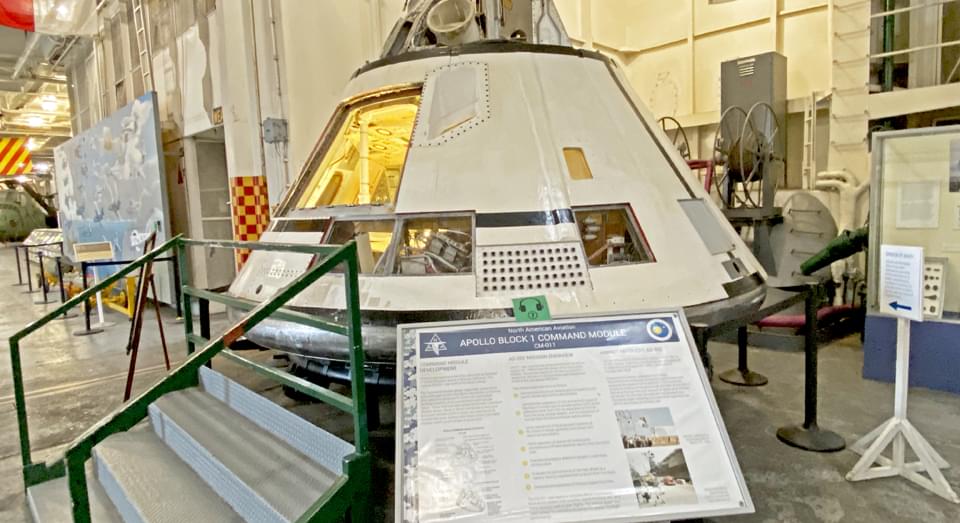
Paranormal Findings
While a boatload of paranormal activities and sightings have been reported by sailors, volunteers, visitors, staff and visiting groups, a boatload of hard evidence has also been captured by amateur and professional paranormal investigators.
STILL HAUNTED?
A big Yes Indeed!
The USS Hornet has the honor of being the most haunted U.S. Navy vessel. The spirits who reside or visit on this U.S. air carrier have become part of this new USS HORNET non-profit organization and like to try to help the living while enjoying their memories, enjoying being with spirit buddies and working through their pain and restlessness as well.

LOCATION
USS Hornet – Sea, Air, and Space Museum
707 West Hornet Avenue,
Alameda, CA 94501
USS Hornet Sea, Air and Space Museum is located across the bay from San Francisco in the dock area of Alameda.
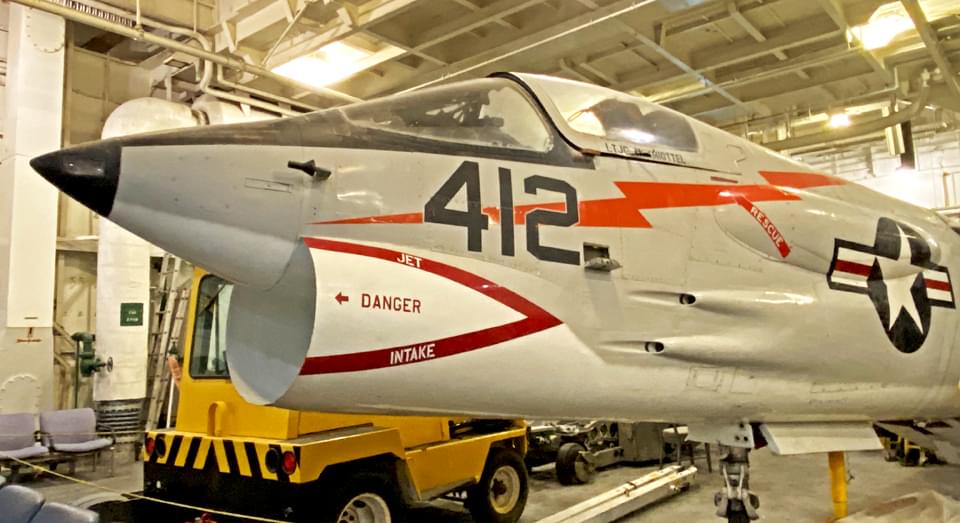
SOURCES INCLUDE
- http://www.hauntedbay.com/features/usshornet.shtml
- https://www.uss-hornet.org
- http://www.its.caltech.edu/~drmiles/ghost_stories.html
- Pamphlet – Hornet Sea, Air and Space Museum
Our Haunted Paranormal Stories are Written by Julie Carr
Our Photos are copyrighted by Tom Carr
Your Paranormal Road Trip



